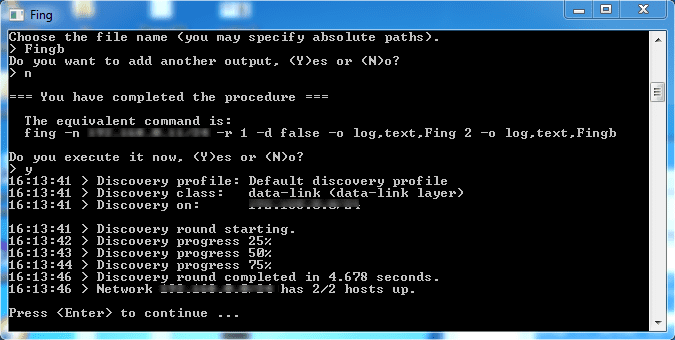

That's why we're using the Fing mobile app here. Anything too big, specialized, or expensive you'll probably have left at home when you really need it. There are many network scanners for Windows, macOS, and Linux, but the best tool to use is often the one you know you'll have with you. Images by SADMIN/ Null Byte Step 1: Install Fing on iOS or Android Phone Using the Fing mobile app to explore new networks (1), to create list of devices to probe (2), and to scan an individual device (3).
Don't Miss: Exploit Routers on an Unrooted Android Phone with Routersploit. If you're interested in stumbling into security cameras, printer servers, wireless routers, and other random devices you'll find on networks, read on to learn what you need. 
The first two bullets above provide the information to support an educated attempt to own devices on a network, or for targeting the router with a more advanced attack against the device, such as Routersploit.
Connecting directly to devices on the network with open ports by guessing or cracking the default password.  Scanning discovered devices for OS information and open ports. Mapping a network by discovering all devices connected to it. The essential things that Fing accomplishes are: Sure, there are many fancier setups for exploiting access, but when physical access is limited, flexibly using your existing tools can be a lifesaver. In some setups, the "Guest" Wi-Fi network can even show you a page with the password to the second "Secure" Wi-Fi network in plain text, just by navigating to the router's IP address. Scanning a network with Fing can lead to many exciting discoveries because often the people who set up the network do so in ways that don't make any sense. Don't Miss: The Principles & Technologies Needed for Cracking Passwords. In an advanced attack, Fing can be used to rapidly obtain targeting information to guide powerful, Hydra password cracking attempts. While primarily an information gathering tool, the Fing network scanner actually allows us to connect directly to a wide range of devices by guessing the password. Networks scanners are recon tools for finding vulnerabilities and are often seen as the first stage in an attack. And if you haven't changed the default password on these devices, an attacker can simply try plugging them in. Most networks allow users to scan and attempt to log in to these connected devices. Sharing your Wi-Fi password is like giving an unlimited pass to snoop around your network, allowing direct access even to LAN-connected devices like printers, routers, and security cameras.
Scanning discovered devices for OS information and open ports. Mapping a network by discovering all devices connected to it. The essential things that Fing accomplishes are: Sure, there are many fancier setups for exploiting access, but when physical access is limited, flexibly using your existing tools can be a lifesaver. In some setups, the "Guest" Wi-Fi network can even show you a page with the password to the second "Secure" Wi-Fi network in plain text, just by navigating to the router's IP address. Scanning a network with Fing can lead to many exciting discoveries because often the people who set up the network do so in ways that don't make any sense. Don't Miss: The Principles & Technologies Needed for Cracking Passwords. In an advanced attack, Fing can be used to rapidly obtain targeting information to guide powerful, Hydra password cracking attempts. While primarily an information gathering tool, the Fing network scanner actually allows us to connect directly to a wide range of devices by guessing the password. Networks scanners are recon tools for finding vulnerabilities and are often seen as the first stage in an attack. And if you haven't changed the default password on these devices, an attacker can simply try plugging them in. Most networks allow users to scan and attempt to log in to these connected devices. Sharing your Wi-Fi password is like giving an unlimited pass to snoop around your network, allowing direct access even to LAN-connected devices like printers, routers, and security cameras.







 0 kommentar(er)
0 kommentar(er)
